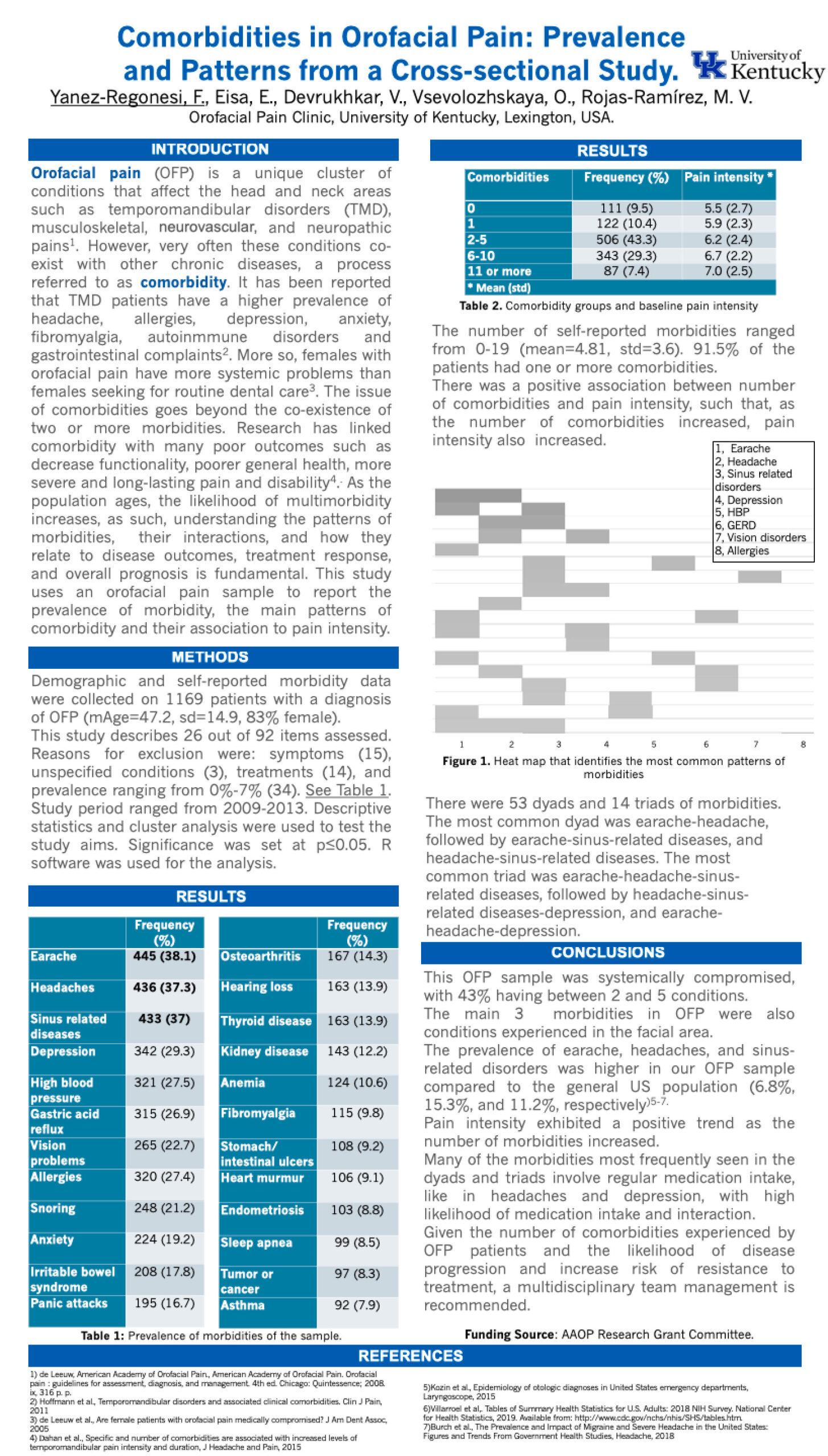Project Description
Comorbidities in Orofacial Pain: Prevalence and
Patterns from a Cross-sectional Study
Author(s): Yanez-Regonesi, F., Eisa, E., Devrukhkar, V., Vsevolozhskaya, O., Rojas-Ramírez, M. V.
Affiliations: University of Kentucky, Lexington, USA.
Aim of Investigation: As the population ages, the likelihood of multimorbidity increases. Certain clusters of morbidities tend to be present with specific chronic conditions. However, no studies to our knowledge have explored the patterns and clusters of multimorbidity in orofacial pain (OFP). This study aimed to: 1) determine the prevalence of morbidity and 2) to describe the patterns/clusters of multimorbidity in OFP.
Methods: Demographic and self-reported morbidity data were collected on 1169 patients (mage=47.2, sd=14.9) with a diagnosis of OFP. We used network and cluster analysis along with association rules methodology to test the study aims.
Results: 91.5% of the patients had one or more morbidities (m=5, sd=3.6, range=0-19). Earache was the most frequent morbidity (38.1 %), followed by headaches (37.3%) and sinus-related diseases (37%). There were 53 dyads and 14 triads of morbidities. The most common dyad was earache-headache, followed by earache-sinus-related diseases, and headache-sinus-related diseases. The most common triad was earache-headache-sinus-related diseases, followed by headache-sinus-related diseases-depression, and earache-headache-depression.
Conclusions: Multimorbidity was present in the majority of the sample. The prevalence of earache, headaches, and sinus-related disorders was higher in our OFP sample compared to the general US population (11.2%, 15.3%, and 11.2%, respectively). At least one of the morbidities most frequently seen in the dyads and triads in our sample involves daily or frequent medication intake. Understanding how OFP and multimorbidity influence treatment outcomes remains an important area for future research.
Acknowledgments and/or Funding Source: AAOP Research Grant Committee.




Leave A Comment